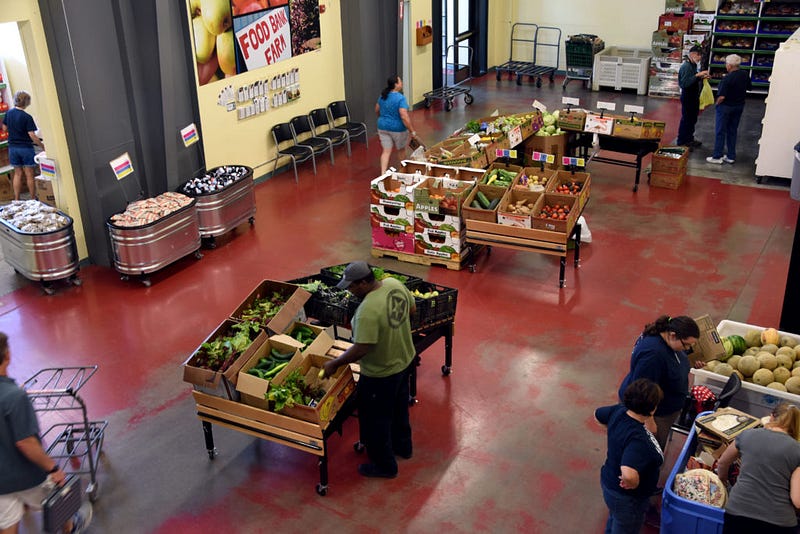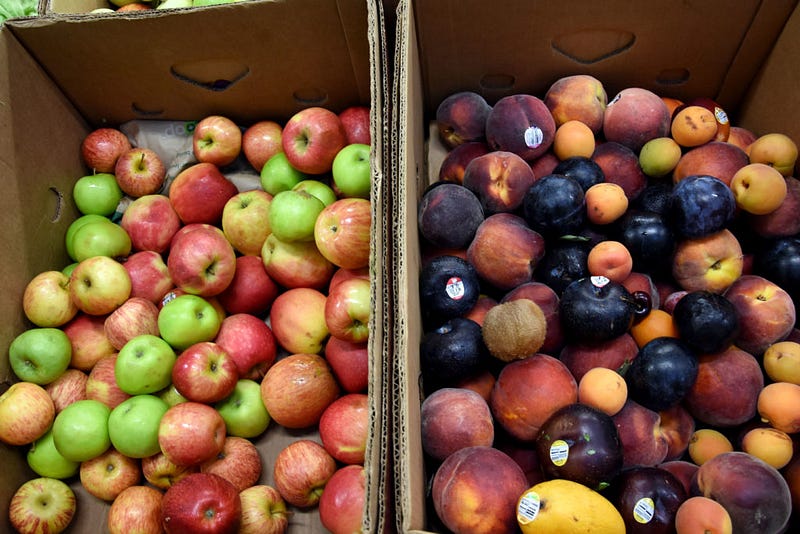Banking on Food
How the local food bank brings changes and improvements to families in need.
STORY BY REBEKAH WAY | PHOTOS BY DAISEY JAMES
Balancing two cartons of eggs in his arm, a volunteer approaches a family and asks if they’d like eggs this week. He smiles, carefully places them into the cardboard box and returns to the fridge to grab two more cartons.
The Bellingham Food Bank resembles a small corner market. Bins of fresh produce stand in the middle of the room, surrounded by shelves of baked goods, bins of bulk grains and beans, and refrigerators full of dairy and frozen protein. The new facility was completed in 2008.
“When we survey people, they say they want what most of us buy when we go to the grocery store, which is more perishable food than nonperishable food,” says Mike Cohen, executive director of the Bellingham Food Bank.
Realizing the high demand for fresh produce, the food bank began purchasing wholesale produce from a dozen local farms, including Cedarville, Cloud Mountain and Terra Verde farms. These partnerships will supply the food bank with nearly 100,000 pounds of local produce this year and ensure that visitors leave with over $100 worth of food each time they visit.

Fifty-five percent of the people who use food assistance programs across the nation identified fresh fruits and vegetables as one of the most desired foods they are unable to access, according to Hunger in America’s report on charitable food distribution in the United States.
The Bellingham Food Bank developed a new system to avoid running out of food too quickly. When a visitor enters, they show a piece of mail with a Bellingham address and receive a colored card denoting the quantity of food they can take from each area. Drew Butler, operations manager for the Bellingham Food Bank, timed the average visit for a visitor and found this method is about 20 minutes faster than the old method.
“We want people to be able to go about their day and not have [visiting the food bank] be a whole event,” Butler says.
Volunteers and staff are behind every aspect of the food bank’s programs. It staffs nine people and 150 to 200 volunteers, who sort donated food and prepare the main floor for distribution to ensure it runs smoothly.
“They really are the spirit of our food bank, and keep staff motivated and focused,” Cohen says. “They give us good feedback on what we’re doing well, and not well, from the food end, since a lot of them are customers as well as volunteers.”
When Wenty Hill moved to Bellingham 10 years ago, she felt that something was missing. She heard about the Bellingham Food Bank from her friend and signed up to volunteer that week and has been there for two years now.
Hill’s favorite part about working the distribution floor is her interactions with clients, especially when she is able to assist them.
“For the first year, I had a lot of trouble sleeping the night before [a shift] because I was so darn excited,” she says.
She describes the food bank staff as very close and courteous, often checking in with people and offering support wherever it is needed.
To Hill, of all the nonprofits she could work with in Bellingham she feels the food bank makes the biggest difference.
“The fact that that service is there to make sure people are taken care of is critical to the community of Bellingham,” she says.

Most interactions with the food bank are through food drives, where people can donate nonperishables. Cohen wanted to challenge this image by establishing new programs to introduce the community to the new food bank by showing them the food bank loves produce and can’t get enough of it.
“It allowed us to really talk to the community and do some education around some stereotypes that were no longer true about who’s going to the food bank and what does a food bank want and need,” Cohen says.
People with home gardens can donate their extra vegetables to the food bank through the Victory Gardens program, a project that has been maturing for the last seven years to create a direct link between the food bank and community.
“It feels like this is the way the average person can give back — by giving a part of their growth and part of their harvest to help the homeless and help people who are hungry and could use support,” Hill says.
According to Hunger in America’s report, the demand for food assistance was at a historical high during the most recent assessment from 2012 to 2013. Rates of unemployment, poverty and food insecurity have remained high since the Great Recession of 2008, according to the report. Agencies assisted by the nonprofit organization Feeding America had 46.5 million visits in 2013, an increase of about 26 percent since 2010.
“Now we’re seeing more and more folks that need that support,” Cohen says. “More of our customers than ever before have at least one person in the house that’s working, often a full-time job, but it’s just not enough to cover the costs of living here in Bellingham.”
Approximately 20 percent of the residents of Bellingham will visit the food bank at least once, Cohen says. The Bellingham Food Bank experienced an increase in the number of visitors seeking food assistance after the recession as well. Eight years later, those numbers have yet to fall.
